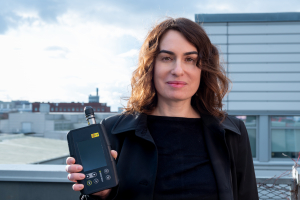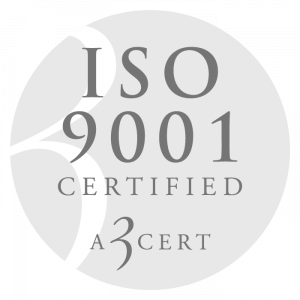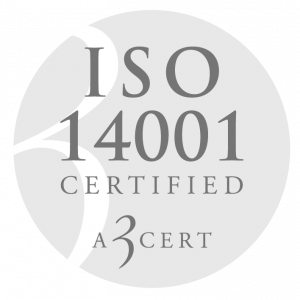The first in the industry to use an autofocus solution in a Raman spectrometer
Katja has received the prestigious award “Technical Person of the Year 2019” (In Swedish: “Årets Tekniker 2019”) from the Swedish Chamber of Commerce.
”Katja is awarded the prize for her many contributions to the Serstech product and patent portfolios, with one patent approved and another applied for over the last 18 months.”

Katja Szybek, Optical Design & Engineering, R&D:
How did your development work begin?
Before I found the job at Serstech, a colleague and I were working on ideas for bringing technology into everyday personal accessories. One vision I had was “automatic” spectacles. I wanted to develop a solution that analyses and automatically adjusts the focus of the spectacles to suit the individual’s eyesight.
It took a few years to make the plans a reality. First I discovered the technology that would make it possible, and then this technology was integrated into our instrument and at the same time we applied for the patent.
How does automatic focus work in practice?
There are optical components in many analytical instruments, ranging from cameras to microscopes and including Serstech’s Raman spectrometer. The lens that sits on our instrument’s nozzle can “see” molecules in the sample by focusing laser light on them and detecting the signal that the molecules send back.
Without autofocus, the lens has only a fixed focal distance to the sample. Unless there is a sufficiently high concentration of the sample’s molecules at that particular distance, the measurement fails.
Autofocus means that the lens has, instead of just one, over a hundred different focal distances within a particular interval. Automatically and within milliseconds it finds the right distance, sees the sample’s molecules and detects their signal. The solution contains no moving mechanical parts, takes almost no extra space and is powered directly by the instrument.
To explain how autofocus works, I need to describe the liquid lens. The lens is a drop of liquid that changes its shape from concave to convex and vice versa with the help of an applied electric field. In physics, the phenomenon is called electrowetting – a commercially available technology that we have integrated with our system.
As the liquid lens changes its shape, the wavefront of the light changes in front of the glass lens. The change in the wavefront causes the focal length to start to vary, and at that moment we find the optimal focal distance.
What difference does the solution make for the user?
Autofocus solves many problems for our users. The instrument becomes simpler and safer to use, and analysis is speeded up considerably by the perfect focus. One detail that occasionally used to interfere with the analysis was strong backgrounds in the sample that confused the spectrum, but this no longer occurs.
With this invention we have maintained the instrument’s robustness while becoming the first in the industry to use an autofocus solution in a Raman spectrometer. I look forward to a future with more inventions that further develop our product.


